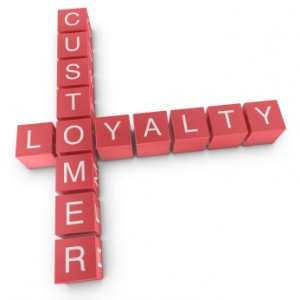Whose Brand Are Customers Loyal To?
The question of brand loyalty sits right in the middle of the tug of war between retailers and manufacturers. Are customers loyal to a retailer because of the brands it carries or because of the retail store itself? Said another way – will a customer patronize any retailer that carries the brands she’s looking for, or will she select to shop at a particular retail store and be less concerned about the brands she finds there?
The answer is a definite “it depends.”
At least that’s what Eric Schiffer, CEO of 99 Cent Only Stores, suggested in a recent talk he gave at a Harvard Business School Club of San Diego breakfast. In explaining his brand’s competitive advantage, Eric made comments along these lines:
If a customer goes into a drug store and doesn’t find the Colgate Total Whitening Gel 16 oz. toothpaste with a flip cap that she’s looking for, she’s going to be disappointed. But if she doesn’t find it in a 99 Cent Only Store, it’s not a big deal. That’s because customers expect drug stores to carry a wide selection of every product, whereas they expect us to offer a great value. So they’re OK if we only have one or two types of toothpaste at any given time – as long as they’re priced at 99 cents.
His comments prompted some thoughts I wanted to get your feedback on. I see a continuum of customer loyalty between retailers and manufacturers – and where a retailer sits on the continuum depends on how it competes.
On the side of the continuum that favors manufacturer brand loyalty sit retailers that compete primarily by offering an exclusive selection of brand name products. Very few retailers fall into this category but Toys R’ Us is one that comes to mind. It is the sole distributor of Imaginarium-branded products in the U.S., so customers looking for the Imaginarium brand shop at TRU out of loyalty to the toy brand. The same is true for customers looking for FAO Schwarz products, since TRU acquired FAO Schwarz a couple years back and it is now the only place you can buy them.
Retailers that compete by offering a wide selection of brand name products sit closer to the middle of the continuum, but still on the side of manufacturer brand loyalty. Most food, drug, and mass retailers fall into this category, as do some department stores. Consumers value these retailers because they know the stores will have the specific brands and products they’re looking for since the stores carry practically everything.
In the center between loyalty to the manufacturer and loyalty to the retailer are those stores that compete with an edited selection of brands and products. This is a common position for many specialty retailers. They provide value by selecting specific goods that they believe fit with their customers’ tastes and needs. Whole Foods is an example of such a brand. Although it carries a pretty wide range of brands and products, its selection is skewed toward consumers looking for organic, locally-grown, or otherwise “good” food. As such, consumers are loyal to Whole Foods and to the brands it carries.
Retailers competing primarily on price sit on the side of the continuum of retailer brand loyalty, but not on the end of it. Dollar stores, off-price stores, and club stores fall into this category because their customers are driven to shop them for their price-points more than their specific brands and products. They know they’re going to get a good price; they just don’t know exactly what they’ll be getting for that price. So consumers have more loyalty to the store — but they usually expect to be able to find a product from their consideration set of acceptable brands.
Finally on the end of the continuum for retailer loyalty sit retailers who compete primarily on service or some other experiential-driver. Williams-Sonoma provides a good example of this kind of retailer. Generally speaking, many of the products found in a Williams-Sonoma store are carried elsewhere, but people choose to shop there because of the shopping experience. Between its cooking demonstrations, creative displays, recipes, and accessories/accompanying products, Williams-Sonoma engenders loyalty to itself.
Of course, this continuum doesn’t apply to vertically-integrated brands like Banana Republic or Apple, whose stores sell its own products predominantly. And, the rise of strong private labels like Target’s up & up brand or Macy’s INC International Concepts complicates the continuum. But at the very least, I believe this provides a framework for thinking about retail competitive strategy – and the implications of different business models.
I’d love to hear what you think. Does the continuum make sense? Would you adjust it in any way? What are other retailers that provide examples of the different positions described? Please leave a comment.
related posts:
